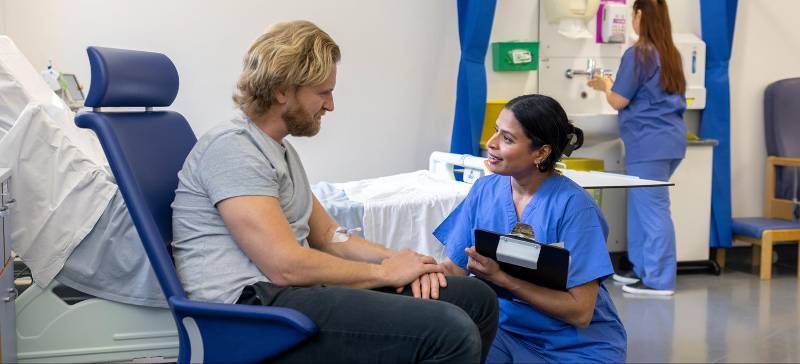Before diving into the latest research on kidney donation safety, try answering these questions. Don’t worry if you’re not sure – the answers will be revealed in the article!
- What is the current estimated risk of death for kidney donors within 90 days of surgery?
- Which surgical technique has contributed significantly to improved safety in kidney donation?
- Are there any groups of donors that show a slightly higher risk following surgery?
- How many deaths occurred in total over a 30-year period among 164,593 kidney donors studied?
Keep these questions in mind as you read through the article. The answers might surprise you!
A new study reveals that the risk of death for kidney donors has plummeted to an all-time low, offering reassuring news for those considering this life-saving act. The research, published in the Journal of the American Medical Association (JAMA), shows that by 2022, fewer than one death occurred for every 10,000 donations – a significant improvement from previous estimates.
The study, conducted by a team led by researchers at NYU Langone Health, analyzed three decades of medical records representing 164,593 kidney donors across the United States. This dramatic decline in mortality rate could encourage more people to consider live kidney donation, potentially saving thousands of lives.
Dramatic Improvements in Donor Safety
Dr. Allan Massie, lead author of the study and director of the Center for Surgical and Transplant Applied Research (C-STAR) Quantitative Core at NYU Grossman School of Medicine, stated, “While we had always understood that kidney donation is safe, our findings suggest that mortality among donors is extremely rare, and the procedure is safer than ever before.”
Key findings from the study include:
- The risk of death within 90 days of surgery has dropped from about three in 10,000 donors to less than one in 10,000.
- Only 36 deaths occurred in total over 30 years among the 164,593 donors studied.
- Half of the deaths occurred within the first week after donation, most commonly due to blood loss linked to surgery.
- Male donors and those with a history of high blood pressure were slightly more likely to die within 90 days of surgery, though the overall risk remained very small.
- Age, race, and ethnicity had no significant impact on mortality risk.
The Evolution of Kidney Donation Surgery
One of the main factors contributing to the improved safety of kidney donation is the widespread adoption of laparoscopic nephrectomy. This minimally invasive surgical technique has largely replaced the traditional open donor nephrectomy method.
In laparoscopic nephrectomy, “the organ is removed through a much smaller incision, with the procedure aided by a camera inserted through a thin tube,” Dr. Massie explains. This approach typically results in less pain, faster recovery times, and fewer complications for donors.
The study found that mortality rates remained relatively stable from 1993 through 2012, with 13 deaths occurring before 2003 and 18 between 2003 and 2012. However, there has been a dramatic improvement since 2013, with only five donors dying within 90 days of their procedure.
Updating Risk Information for Potential Donors
The study’s senior author, Dr. Dorry Segev, emphasizes the need to update current guidelines: “These results demonstrate that the current guidelines used to inform potential kidney donors of their risks need to be updated to reflect nearly a decade of safety improvements.”
This updated information could help alleviate concerns about the safety of kidney donation and potentially encourage more people to consider becoming living kidney donors.
Why It Matters
This research has significant implications for both potential kidney donors and recipients:
- Increased donor pool: With the risk of donation now shown to be extremely low, more people may be willing to consider becoming living kidney donors.
- Improved informed consent: Potential donors can now be given more accurate information about the risks involved in the procedure.
- Reduced waiting times: An increase in living donors could significantly reduce the waiting time for kidney transplants, potentially saving thousands of lives each year.
- Enhanced quality of life: Living donor kidneys typically function better and last longer than those from deceased donors, offering recipients a better quality of life post-transplant.
The findings are particularly meaningful to researchers like study co-author Macey Levan, JD, PhD, who is herself a kidney donor. “As a kidney donor and research scientist in the field, it is reassuring to see the progress we have made,” Levan commented.
While these results are extremely encouraging, potential donors should still discuss all aspects of the procedure with their healthcare providers. The decision to donate a kidney remains a personal one, but this study provides reassuring evidence of the procedure’s safety in the modern era of transplant medicine.
Quiz Answers
- Less than 1 in 10,000
- Laparoscopic nephrectomy
- Male donors and those with a history of high blood pressure (though the overall risk remains very small)
- 36 deaths
How did you do? We hope this article helped you learn more about the improving safety of kidney donation.


